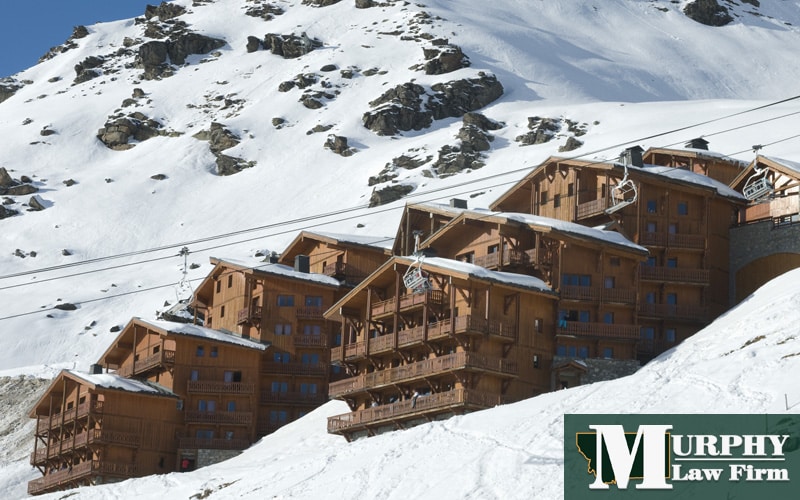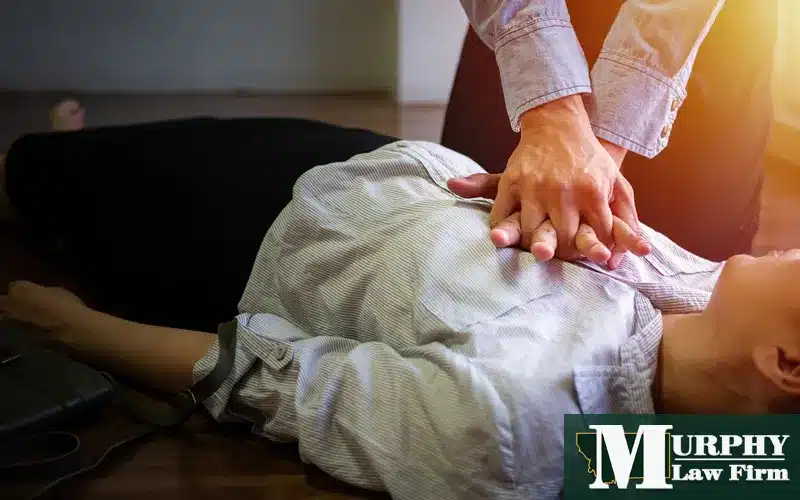
What to do if you’re injured while working at a ski resort in Montana
Montana’s skiing industry has grown steadily over the years. In 2010, the industry contributed more than $50 million to Montana’s economy from non-resident visitors and supported more than 1,000 jobs. The number of visiting skiers has grown since the 2010 season which hosted 1.35 million visitors.
Montana’s world-class ski resorts include:
- Big Sky Resort
- Whitefish Mountain Resort
- Bridger Bowl
- Montana Snowbowl
- Discovery
- Blacktail
- Red Lodge Mountain
- Great Divide Ski Area
- Lookout Pass
- Lost Trail Powder Mountain
- Showdown Montana
- Maverick Mountain
Nationwide, the ski resort industry has been consolidating in mega-operators. However, Montana ski resorts are still largely independent or family-owned. The resorts operate in 2 seasons: summer and winter. In the summer, the resorts are visited by in-state and out-of-state tourists enjoying the cool mountain climate for the views, mountain biking and hiking. In the winter, the mountains are packed with skiers and snowboarders from all around the world.
For those of us who love playing in the mountains, this comes as no surprise as lift lines get longer and the runs get more crowded. While these crowds can be frustrating, they are a major boon to local economies and provide thousands of jobs across the state.
But there’s a downside, too—namely that more ski resort employees to meet the growing demand mean an increasing rate of work-related accidents and injuries on the hill.
If you work at a Montana ski resort and suffer a serious work injury, you should contact an experienced workers’ compensation attorney right away.
Ski resort employees face serious dangers
While working at a ski resort can be a fun and active lifestyle, it certainly has a dark side—namely in the rates of work-related injuries and accidents.
Ski resorts have the third-highest rate of occupational injuries among all industries, and this rate has been going up in recent years. The Occupational Safety and Health Administration (OSHA) reported that the injury rate for ski resorts was 10.1 injuries per 100 employees in 2017, which nearly doubled from to the 5.6 injuries per 100 employees in 2014.
Some of the most common job positions at ski resorts include:
- Mechanics servicing lifts, plows and other heavy equipment
- Lift operators
- Technicians maintaining and repairing skis, snowboards, etc.
- Clerks selling lift tickets and tending to retail stores
- Resort workers (maids, bellhops, desk clerks, etc.)
- Restaurant workers
- Bus/shuttle drivers
Common ski resort worker injuries
The risk of injury is bound to be higher in any outdoor work environment busy with heavy equipment large vehicles and lots of people. The most common risks unique to ski resort employees include:
- Increased risk of slips and falls on ice or snow
- Collisions on the slopes
- Heavy lifting strains
- Falling from lifts
- Injuries while operating or repairing lifts and heavy equipment
- Avalanche and other risks while rescuing skiers
A Guide to Montana’s Good Samaritan Law
Understand how Montana’s Good Samaritan laws can shield you from liability during an emergency.
Montana workers’ compensation for injured ski resort employees
Montana law requires most employers to carry workers’ compensation insurance. The requirement applies to any employer with 3 or more full-time or part-time (seasonal) employees, which applies to all of the major ski resorts list above.
The insurance benefits for a ski resort employee include compensation for qualified work-related medical and rehabilitation treatment, lost income, death and other benefits to employees and their dependents.
Employees are covered from the first day of their employment, regardless of how many hours a week, or how often, they work.
What to do if you get hurt on the job
If you are hurt while working at a ski resort or get sick on the job, you will need to do the following:
- Seek medical attention immediately. You can be examined by a physician of your choice. Your attorney will probably have some recommendations of doctors experienced with job injuries and workers’ compensation cases. You can change your physician once but only after notifying the insurance carrier.
- Report the injury to your employer in writing. Whatever you say in your report could become important later as your case proceeds.
- File your workers’ compensation claim. Complete a First Report of Injury (FROI) form and file it with your workers’ compensation insurance company or the Department of Labor and Industry within 1 year of an injury or illness.
- Consult an experienced workers’ compensation attorney as soon as possible.
Additional employer liability considerations
If a ski resort is shown to have violated OSHA or federal safety rules, it can incur additional fines.
For example, in 1997, Big Sky Ski and Summer Resort was fined $18,000 by OSHA for failing to adequately train a ski patrol member who was killed by an explosion intended to trigger an avalanche on Christmas day. Another person was injured.
The Big Sky incident is still relevant for workers’ compensation today. It goes to show that your workers’ compensation award can be affected by your employer’s liability for misconduct and gross negligence, including OSHA violations. For these and other reasons, it is wise to consult with an experienced Montana workers’ compensation attorney early on in your claim process.




